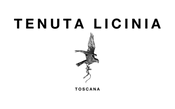
Sasso Di Fata
Sasso di Fata is a historic vineyard in the hills around Lucignano. In the 20th century, as people began to leave for the city and mass agriculture hit the market, the vineyard went from producing small high quality cuvee to being quasi abandoned and farmed for the production of low quality wine. Eventually poor plant material was put into the ground and the once prestigious plot lost its identity.
Jacques de Liedekerke who bought the plot in the 70s planned for decades to bring it back to producing high level wines. Given the schistous subsoils he set out to plant cabernet sauvignon and cabernet franc. The reason he choose those varieties was because he felt that small scale single vineyard cabernet sauvignon wines were not produced enough in Europe. He felt that the Sasso di Fata vineyard gave him the opportunity, with its peculiar gold schistous subsoils, to produce something highly identitarian.
The identity of the vineyard comes out in two ways in the resulting wines. First, the vineyard produces more floral wines - it especially produces wines with a rose and rosehip aroma. In that sense, it departs from the classical cabernet sauvignon style of Tuscany which is slightly more on the black fruits and balsamic side. The second way in which the subsoils affect the wine is that they give a graphite and saline side to the wines. These dimensions can be found, in different particular expressions, on other schistous/slate soils, in Panzano and in the Douro in Portugal.
